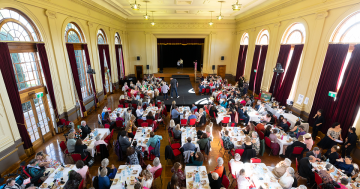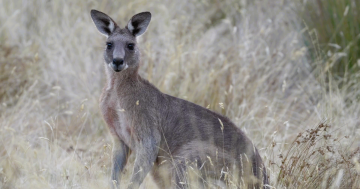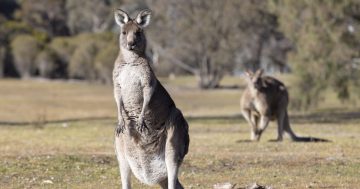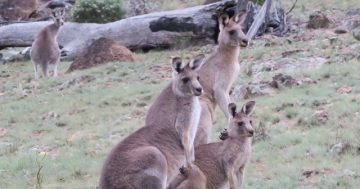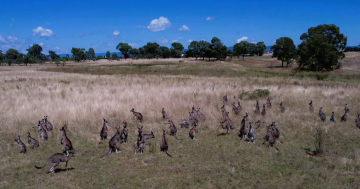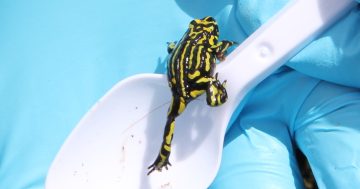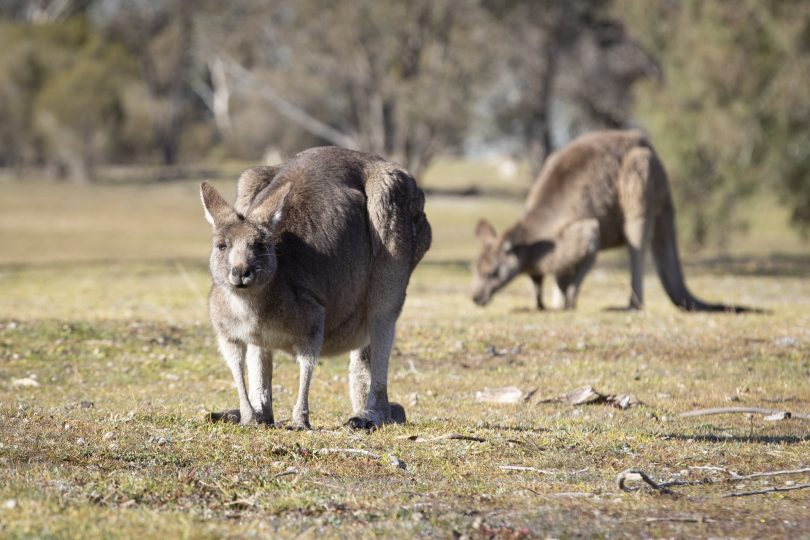
The ACT Government has defended its kangaroo counting methodology. Photo: Michelle Kroll.
They’re quick, they blend in with the landscape, and they often hop from the sight of humans.
So how does the government’s team of ecologists actually count how many kangaroos are in the city’s nature reserves?
That remains a contentious subject for some.
Opponents of the annual kangaroo cull argue the government is overstating how many of the creatures there are in the landscape.
Environment Minister Rebecca Vassarotti explained how kangaroos are counted during budget estimates hearings last month.
She said while direct counts played a role in the kangaroo count, they were generally lengthy processes as they involved observers going through an entire site without missing any and then going back again and again to ensure a reliable count.
In her response to the petitioners, Ms Vassarotti said direct counts were only suitable for sites with open vegetation and were difficult to conduct in large areas with dense vegetation.
Instead, the ACT Government uses sweep counts and walked line transect counts – methods that have recently been peer-reviewed.
Sweep counts involve coordinated lines of people walking across the site and counting kangaroos that move through the line – useful for larger areas and sites with “issues” around vegetation and terrain.
It requires careful coordination of the counters, aided by two-way radios and maps, Ms Vassarotti said.
In most cases, the government relies on walked-line transect surveys.
These are conducted across 11 days, early in the morning when kangaroos are evenly dispersed across the grazing landscape. They don’t take place in strong wind, heavy fog or rain.
While they are pretty technical, the surveys essentially chop the landscape into different sections, and observers walk along about 44 km of transects (lines) per nature reserve to count kangaroos. They take into account features like roads and water bodies.
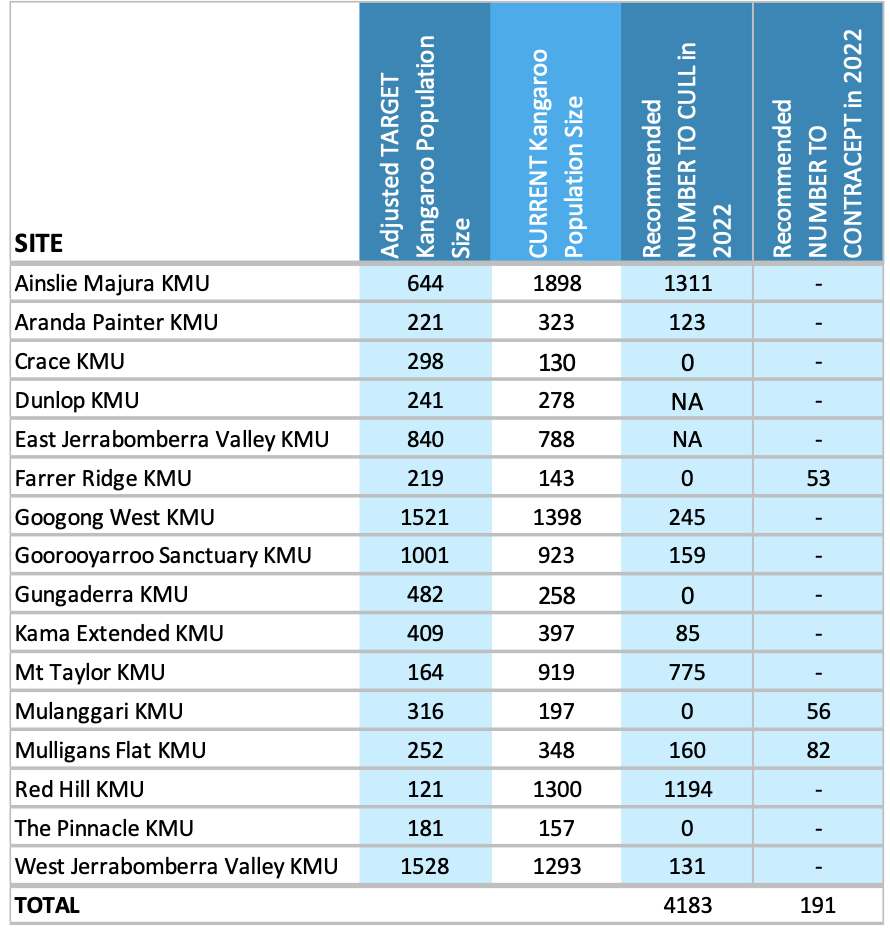
ACT Government 2022 kangaroo counts. Image: Screenshot.
The ACT Government’s 2022 count is publicly available, and its report stated this year’s counts were likely to have underestimated kangaroo populations due to high vegetation.
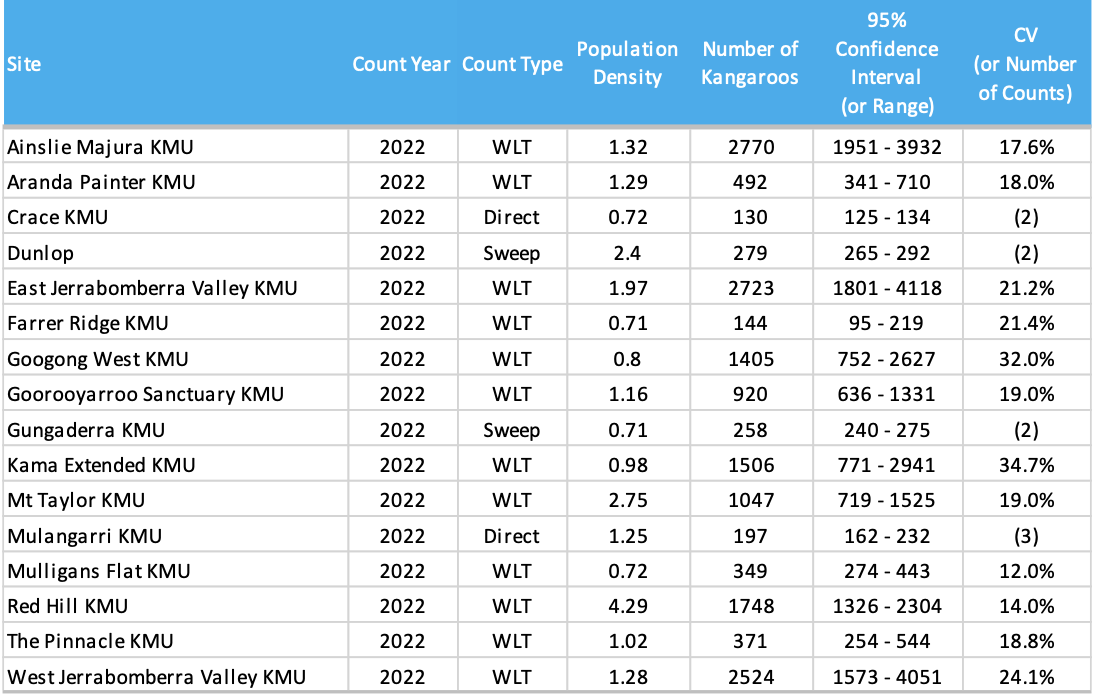
ACT Government kangaroo counts and count types. Image: Screenshot.
But these numbers aren’t good enough for the Save Canberra’s Kangaroos group which has, over the last two and a half years, been counting kangaroos through the aforementioned citizen science method of direct counts.
In a report published in May this year, the citizen scientists said they could only find 4074 kangaroos in 37 nature reserves around the Territory after “systematically” searching for them.
That figure compares to the 16,863 the government’s ecologists and observers found.
The report’s authors stated it was not intended to be a census of kangaroos to see if there was an overabundance of the animals.
ACT Flora and Fauna Conservator Bren Burkevics said the discrepancy in the actual versus recommended cull comes down to the small window in which a cull is permitted, logistics and safety.
Mr Burkevics said differences in opinions about kangaroo count numbers weren’t “unexpected”.
“What I can say is the survey is conducted by staff at EPSDD who are senior ecologists who have been conducting them for years to best practice ecological standards,” he said.
“We know that when kangaroos are overabundant, they can overgraze some of the ACT’s reserves that are home to critically endangered woodlands and grasslands.”
A recent petition has been started online by the Belco Party urging the government to halt the cull while an independent review takes place.
It follows the Legislative Assembly Standing Committee on Environment, Climate Change and Biodiversity only last month rejecting further examination of a different petition, signed by 853 Canberrans, which called for essentially the same thing.
The committee argued in response the Territory’s kangaroo management program had already been “extensively reviewed”, including in four ACAT hearings.
In the following year, the government says it will conduct an opinion poll of ACT residents, review its 2017 kangaroo management plan and undertake an independent veterinary audit of the program.
Kangaroo culls have been underway in the Territory for the last 15 years. At the close of this year’s cull, 1645 animals were killed.
The Territory government is also trialling a fertility control program whereby the contraceptive dart GonaCon is shot at females.
It’s hoped the $300,000-a-year program will offer a more humane approach to controlling kangaroo populations and that wider use of the drug will reduce the need to kill animals.
Ms Vassarotti said it is challenging, but most of the community supported the need to manage kangaroo populations.
“It is disappointing but sadly unsurprising that the Belco Party is peddling misinformation about the ACT’s kangaroo management to find relevance again. If the Belco Party is concerned about the science of the cull, the ACT’s kangaroo management policy and extensive peer-reviewed research are publicly available online,” she said in a statement.











